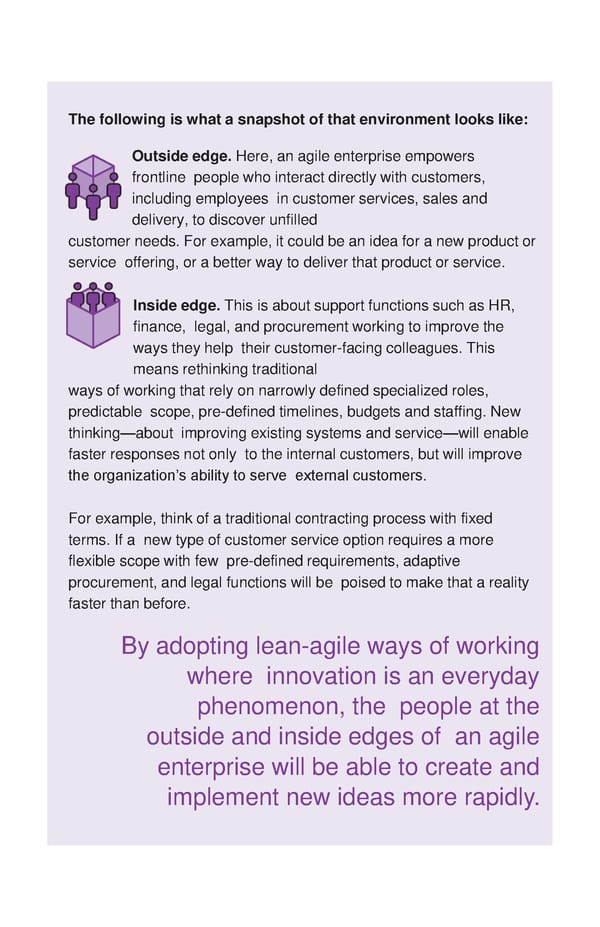The following is what a snapshot of that environment looks like: Outside edge. Here, an agile enterprise empowers frontline people who interact directly with customers, including employees in customer services, sales and delivery, to discover unfilled customer needs. For example, it could be an idea for a new product or service offering, or a better way to deliver that product or service. Inside edge. This is about support functions such as HR, finance, legal, and procurement working to improve the ways they help their customer-facing colleagues. This means rethinking traditional ways of working that rely on narrowly defined specialized roles, predictable scope, pre-defined timelines, budgets and staffing. New thinking—about improving existing systems and service—will enable faster responses not only to the internal customers, but will improve the organization’s ability to serve external customers. For example, think of a traditional contracting process with fixed terms. If a new type of customer service option requires a more flexible scope with few pre-defined requirements, adaptive procurement, and legal functions will be poised to make that a reality faster than before. By adopting lean-agile ways of working where innovation is an everyday phenomenon, the people at the outside and inside edges of an agile enterprise will be able to create and implement new ideas more rapidly.
 Three Elements that are Conducive for Innovation Page 2 Page 4
Three Elements that are Conducive for Innovation Page 2 Page 4